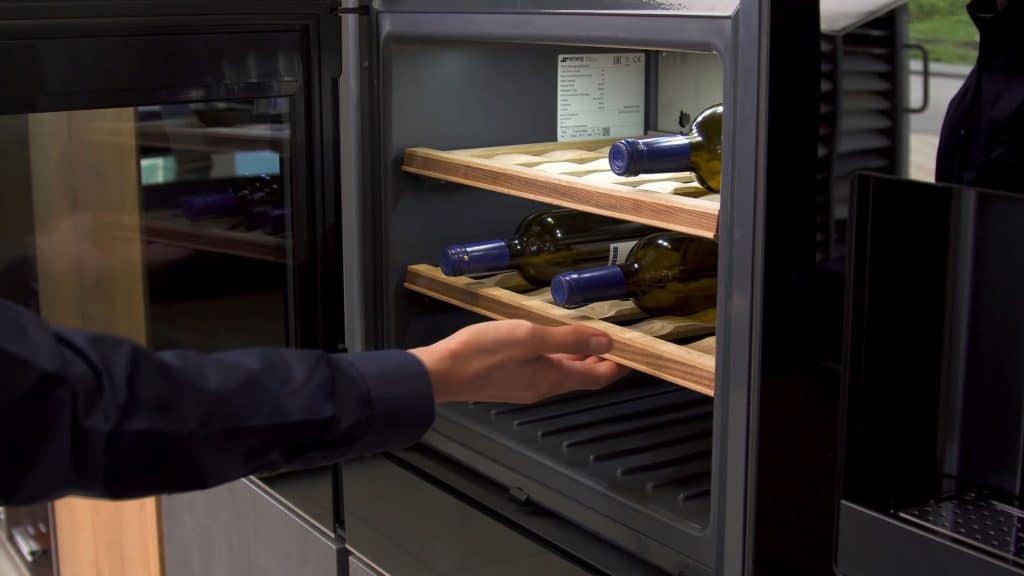Important Dos and Don’ts When Chilling Wine
How about sipping the perfect glass of wine along with your delicious meal? It could be red, rosé, white, or sparkling, and when in a restaurant you’ve probably been asked whether you want it chilled or at room temperature. Even though manufacturers will state ‘best served chilled’ on the wine bottles, chilling wine is an art and there are a few rules that should be observed.

What is chilled wine?
Chilled wine is cooled to lower temperatures and many people believe it is better to enjoy wine chilled rather than when it’s warm. It’s also believed that chilled drinks reduce the quick effect of alcohol, letting you to enjoy your drink at a leisurely pace.
The dos of chilling wine
Wine storage temperature
You can enjoy several types of wine, from red to white. Each has different properties, meaning they need different temperatures when storing and chilling. Storing wine properly will help preserve its quality and flavour. It’s said that wine begins to age faster as the temperature warms, and at 20°C (70°F), the heat can reduce the quality of the wine. Therefore, do know the ideal temperatures for chilling wine.
Red wine is best stored around 13°C (55°F). If storing red wine long term to age, you can get as low as 7°C (44°F) but keep temperature constant. A fluctuation or daily change of temperatures will impact the quality of the wine in the long run.
White wine and rosé wine should ideally be stored in cooler temperatures.
Chilling techniques
There are many ways to chill wine and unless you own dedicated wine chillers there are a few techniques available with differing effectiveness. Common techniques are to refrigerate the wine bottle , chill glasses, or submerge bottles in a salted ice bath.
If you put the whole bottle in the fridge, it’s best to place it at the back. Constant fridge opening increases the time it’ll take to chill your drink. At the back, there’s minimal temperature interference.
If you prefer chilling the glass, make sure you take enough time before serving the wine.
The don’ts of chilling wine
Don’t add ice cubes to wine
Adding ice cubes to beverages is an easy practice to chill and keep drinks cold. Unfortunately, it’s a technique that will negatively affect the quality of the wine.
Over time, the cubes will melt and make the wine watery resulting in a diluted wine with significantly reduced flavour. An alternative to chilling wine without altering its concentration are reusable ice cubes made from stainless steel, stone, or granite that don’t melt. It’s important to note their efficiencies differ so choose an alternative that’ll meet your chilling needs during available timeframes. Stainless steel ice cubes take two to three hours to chill, with stone cubes taking two to four hours.
Alternatively, add frozen grapes to your wine. Choose white grapes for white wine and red ones for red wine for an optimum wine flavour.
Do not freeze wine
Freezing is one of the preferred ways of making something cold, but it’s not recommended to do this with wine. A frozen wine bottle in the freezer experiences differential pressure. The pressure inside the bottle is different from the one in the freezer which might result in the bottle succumbing to pressure and breaking open, saying goodbye to your wine.
Prolonged freezing also turns your wine into ice, making it tasteless should you want to use it for cooking your meal or drinking it instantly.
However, even if it isn’t the best practice, a freezer can be helpful to cool wine when in a hurry. Reduce the freezing time to 30 minutes or less depending on the wine. Red wine will chill for five to ten minutes in the freezer, while white wine will take approximately 25 minutes.
Do not wrap a wine bottle in a dishcloth
Today, there are many ways to execute a task, especially with the rise of DIY projects and wine chilling hasn’t been left out.
One of the techniques people are adopting is wrapping a dishcloth around the wine bottle before chilling it in the refrigerator. Yes, it’ll help prevent the wine from exploding upon opening, but there’s a disadvantage. Its material makes it an insulator, slowing down the wine-chilling process. So, if you want a fast, wine-chilling process then avoid this practice.
Conclusion
There are many ways to enjoy a favourite glass of chilled wine. The discussion above pinpoints that the only way to enjoy your chilled wine is by doing it right. To allow enjoyment of wine, follow the above mentioned guidelines to maintain the flavour of wine.